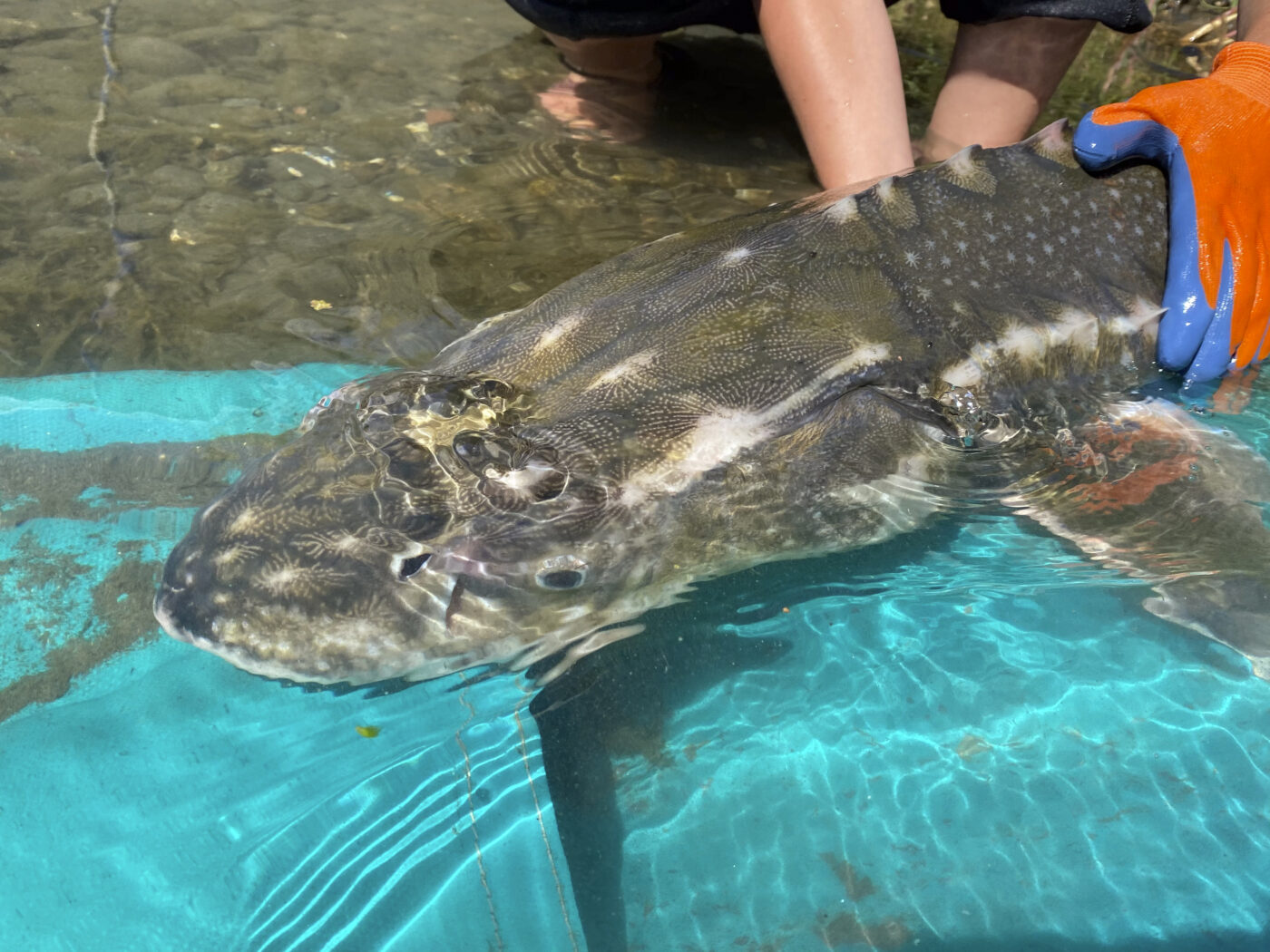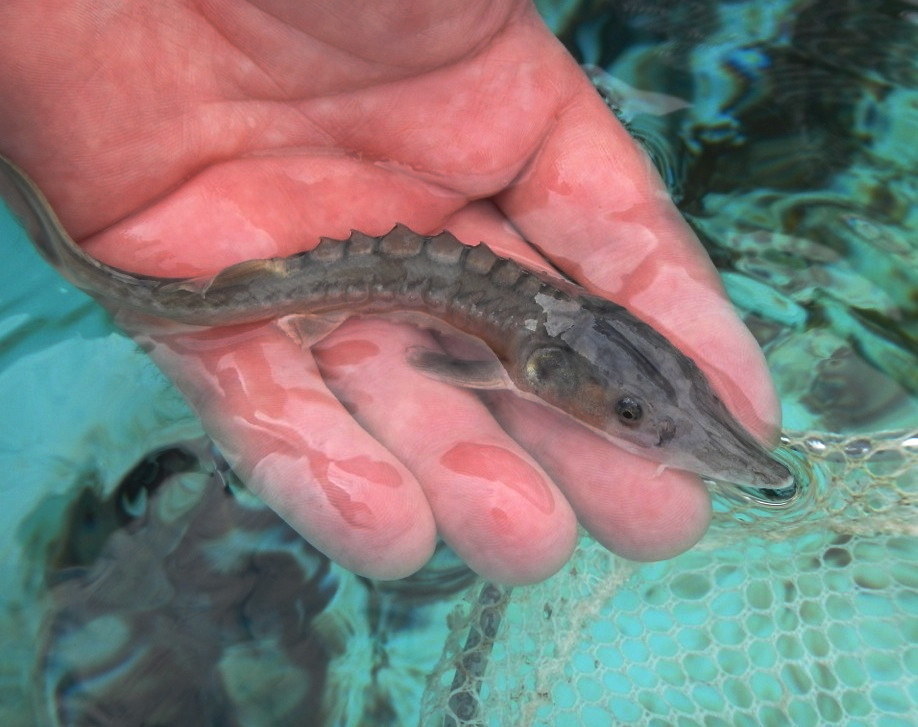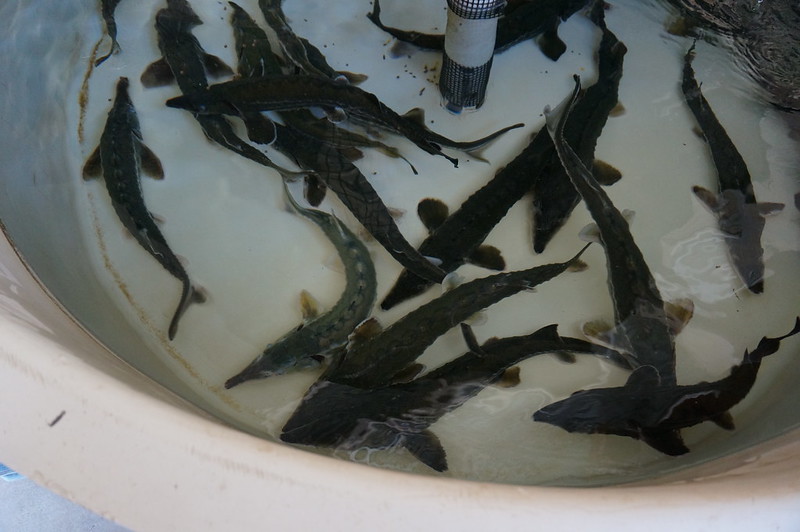Monday September 9, 2024

The thickly scaled sturgeon is one of the most ancient fish alive today, with fossils dating back over 65 million years ago to the late Cretaceous Period. Despite having endured millenia on this planet, sturgeon today face a number of challenges that threaten their survival. Green sturgeon (Acipenser medirostris), which are found along the west coast of North America, are particularly vulnerable because they have complex life cycles and spawn in only a few rivers. Green sturgeon are anadromous, meaning that they are born in freshwater and migrate to estuarine and ocean environments to grow into adults before returning to their natal rivers to spawn, a journey that has become all the more perilous with dam development and habitat alteration. Recently, the transitional journey from freshwater to brackish environments was studied in juvenile green sturgeon using acoustic telemetry. Tracking sturgeon movement in the Sacramento River allowed the researchers to better understand what might be influencing the migration of these mysterious fish (Poytress, Polansky, & Gruber, 2024). The data gathered by this study improves understanding of the habitat transitions and migration patterns of juvenile green sturgeon, information that is vital for developing management strategies to best support the recovery of this threatened fish species.

The southern distinct population segment (SDPS) of green sturgeon, primarily spawns in the Sacramento River drainage. Over a 300 kilometer stretch of the Sacramento River from Red Bluff to the Butte City Bridge, 183 juvenile green sturgeon were captured. Of these, 88 sturgeon were of sufficient size (>150 mm in total length) and in good physical condition, and were implanted with microacoustic transmitters to monitor their residency, spatial distribution, movement rates, and downstream migration patterns. The researchers were most interested in understanding how environmental factors such as river discharge, turbidity, and water temperature influence the initiation of sturgeon movements from riverine to brackish waters during the outmigration to the Sacramento-San Joaquin Delta Estuary.

Interestingly enough, analyzing the movements of the tagged fish revealed two distinct migration patterns: continuous and stepped. In continuous migration, sturgeon moved steadily downstream, while in stepped migration, they paused at intervals during their journey. It was found that smaller sturgeon (those under ~300 mm in length) tend to exhibit a stepped migration pattern, whereas larger individuals did not. This is likely because juvenile sturgeon are thought to be inefficient swimmers and often use river currents to aid in migration and decrease the energy cost – so when river flows are low, these smaller juvenile sturgeon take strategic pit stops until they can catch a ride on stronger currents. After careful analysis of environmental factors using box plots and logistic regression models, juvenile green sturgeon were found to transition to downstream brackish waters after early-season storm events increased turbidity and created higher flows. However, temperature did not directly influence the initiation or timing of their migration. Instead, it had a synergistic effect with increased flow and turbidity indicating shorter day length cue migration.

With a newly discovered understanding of the natural forces driving young sturgeon to migrate, fisheries managers are better equipped to identify crucial habitats for species conservation. To capitalize on this advantage, researchers compared the effectiveness of capture methods along the study reach to pinpoint the most important areas for protection. Benthic trawls were found to be more effective in the upper reaches, where tagged fish were found to remain for many months based on telemetry data. This suggests that the reach of the Sacramento River between Red Bluff and Hamilton City is an important juvenile sturgeon rearing habitat. In contrast, sturgeon captured using rotary-screw traps in the upper reaches were generally not recaptured, indicating they did not stay long and were actively migrating downstream. The minimal residency time of fish caught by either method in the middle and lower reaches suggest these areas are not likely used for rearing, serving instead as brief stops on the sturgeon’s ocean-bound journey downstream.
These findings highlight the significant role environmental factors such as river discharge and turbidity play in triggering juvenile green sturgeon migration, and reinforce the need for effective capture methods based on the habitat type of interest (i.e. rearing or migratory habitat). This information is essential for water resource management and conservation efforts aimed at supporting the recovery of threatened SDPS green sturgeon populations. With long lifespans of 50 to 60 years and late sexual maturity occurring after 15 years of age, their populations take a long time to recover from disturbances and declines. By understanding the habitat transitions and migration patterns of these young sturgeon, managers can optimize water management techniques and focus habitat restoration activities to enhance the survival and recovery of this species. In fact, similar studies have already led to changes in water project management operations. For example, a recent study focused on adult life phases resulted in the removal of the Red Bluff Diversion Dam, which was once a barrier to spawning habitat – a significant win for green sturgeon conservation!
Header Image: A young green sturgeon being measured.
This post was featured in our weekly e-newsletter, the Fish Report. You can subscribe to the Fish Report here.
